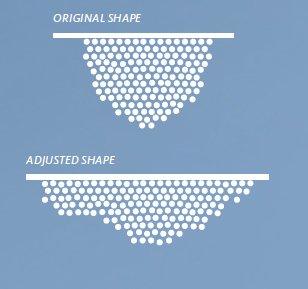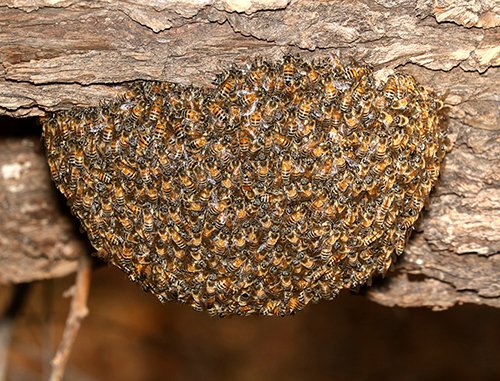Bee Swarms: In Good Shape

To lessen sway and strain on bees clinging to the base, a swarm of bees will flatten its cone shape in high winds.
Bees are most vulnerable when a colony leaves the safety of a hive to search for a new home. The search can take days; meanwhile, the bees are subject to wild shifts in temperature, high winds, and driving rain.
But like everything else in the bees’ colonial life, they are experts at survival—by working together. While scouts seek a permanent home, the swarm will form a temporary, buzzing blob surrounding the queen on a convenient spot, such as a tree branch. A few bees hang onto the branch while the rest mold themselves into a particular shape. The shape of the swarm changes to adapt to each new challenge.

Alan Schmierer via Wiki Commons (public domain)
A recent study revealed just how suitable this particular shape is: by widening the base of the swarm, they lessen movement and relieve the strain on the bees clinging to the branch.
Scientists are still investigating how bees instinctively know to adjust the shape of the swarm so that it’s suitable for the prevailing conditions. But the Creator knows and provided these bees with instinctive solutions that remind us of his great care.
Article was taken from Answers magazine, September–October, 2019, 38.
- © 2024 Answers in Genesis
- Privacy Policy
- Contact
- About
